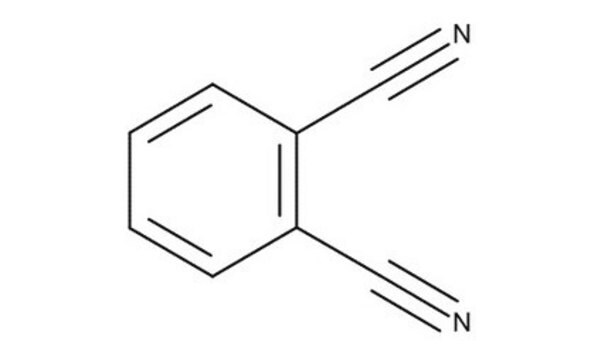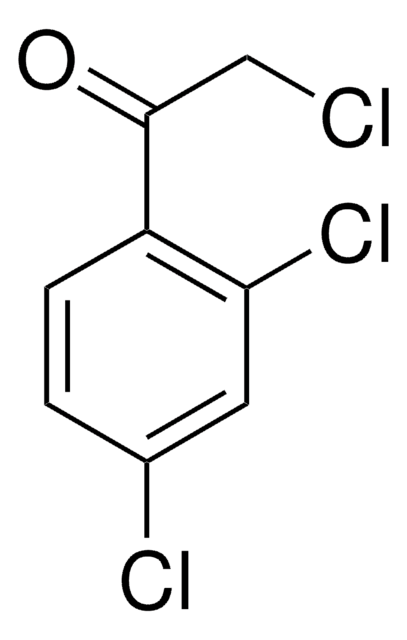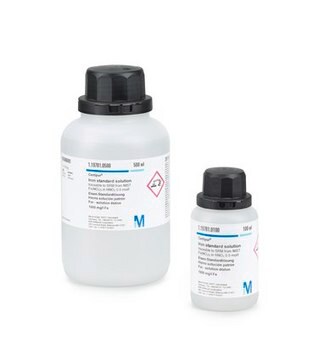208299
Cadmium chloride hydrate
98%
동의어(들):
Cadmium dichloride hydrate, Cadmium(2+) dichloride hydrate
로그인조직 및 계약 가격 보기
모든 사진(1)
About This Item
Linear Formula:
CdCl2.xH2O
CAS Number:
Molecular Weight:
183.32 (anhydrous basis)
EC Number:
MDL number:
UNSPSC 코드:
12352302
PubChem Substance ID:
NACRES:
NA.23
분석:
98%
양식:
solid
추천 제품
신호어
Danger
유해 및 위험 성명서
Hazard Classifications
Acute Tox. 1 Inhalation - Acute Tox. 3 Oral - Aquatic Acute 1 - Aquatic Chronic 1 - Carc. 1B - Muta. 1B - Repr. 1B - STOT RE 1
Storage Class Code
6.1B - Non-combustible acute toxic Cat. 1 and 2 / very toxic hazardous materials
WGK
WGK 3
Flash Point (°F)
Not applicable
Flash Point (°C)
Not applicable
이미 열람한 고객
Kovo G Akpomie et al.
Scientific reports, 10(1), 17094-17094 (2020-10-15)
This work was aimed at the synthesis of a hybrid (STpe-AgNP), obtained by impregnation of silver nanoparticles (AgNP) onto Solanum tuberosum peel (STpe), for the ultrasonic assisted adsorption of bromophenol blue (BB) dye. SEM, FTIR, XRD, EDX, TGA and BET
Thi-Hai Anh Nguyen et al.
Waste management (New York, N.Y.), 120, 755-761 (2020-11-26)
Recycling opportunities for graphitic carbon from lithium-ion battery (LIB) anodes have been neglected owing to the relative low value of application. In this study, the potential methods for removing toxic metals (lead, barium, and cadmium) and organic compounds (2,4-dinitrotoluene [DNT]
Alan Kania et al.
The Journal of neuroscience : the official journal of the Society for Neuroscience, 40(28), 5362-5375 (2020-06-14)
Binge-eating disorder is the most common eating disorder. Various neuropeptides play important roles in the regulation of feeding behavior, including relaxin-3 (RLN3), which stimulates food intake in rats through the activation of the relaxin-family peptide-3 receptor (RXFP3). Here we demonstrate
Po-Jung Jimmy Huang et al.
Analytical chemistry, 87(13), 6890-6895 (2015-06-11)
Mercury is a highly toxic heavy metal, and detection of Hg(2+) by biosensors has attracted extensive research interest in the past decade. In particular, a number of DNA-based sensing strategies have been developed. Well-known examples include thymine-Hg(2+) interactions and Hg(2+)-activated
Meritxell Navarro-Reig et al.
Analytical and bioanalytical chemistry, 407(29), 8835-8847 (2015-09-26)
The comprehensive analysis of untargeted metabolomics data acquired using LC-MS is still a major challenge. Different data analysis tools have been developed in recent years such as XCMS (various forms (X) of chromatography mass spectrometry) and multivariate curve resolution alternating
문서
Colloidal quantum dots (CQDs) are semiconducting crystals of only a few nanometers (ca. 2–12 nm) coated with ligand/surfactant molecules to help prevent agglomeration.
자사의 과학자팀은 생명 과학, 재료 과학, 화학 합성, 크로마토그래피, 분석 및 기타 많은 영역을 포함한 모든 과학 분야에 경험이 있습니다..
고객지원팀으로 연락바랍니다.















